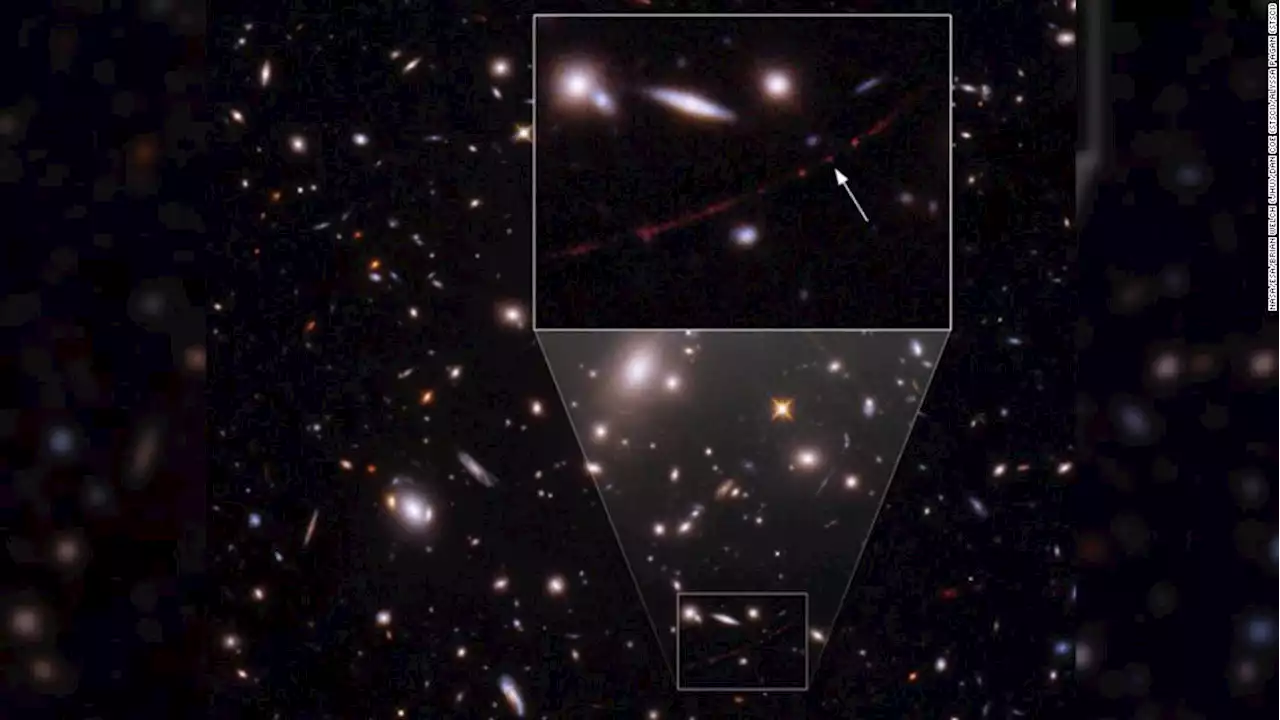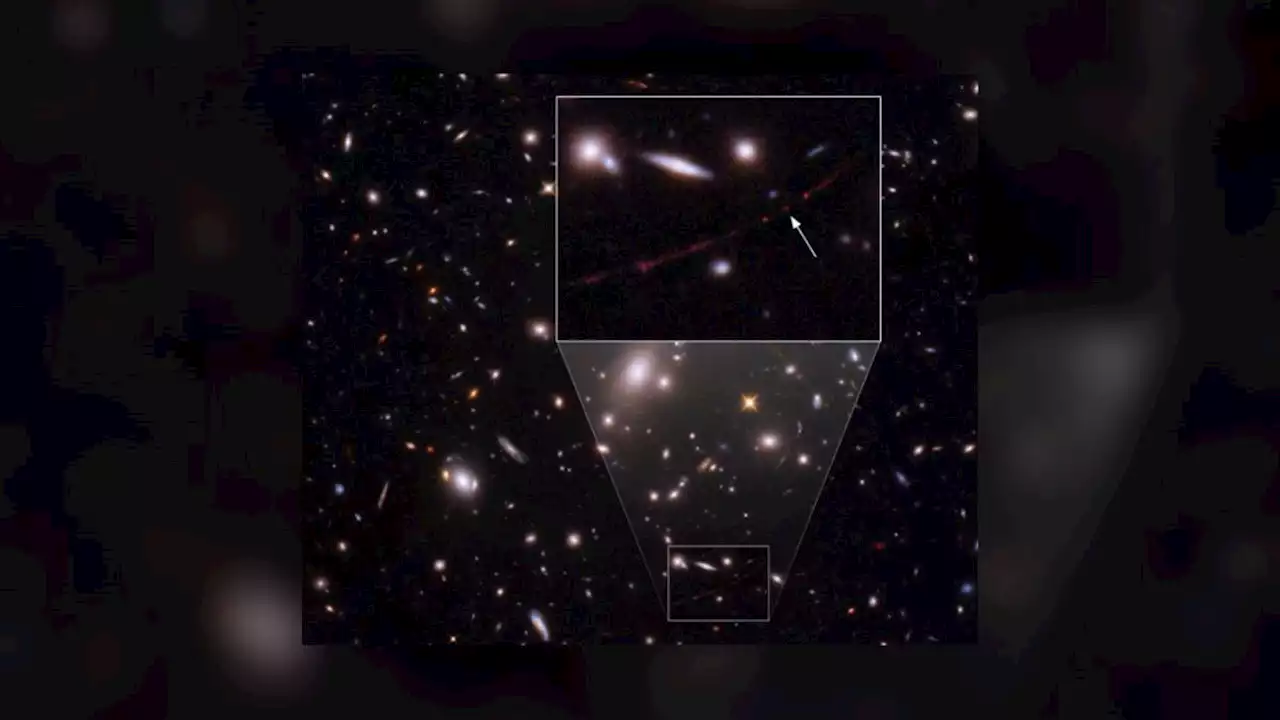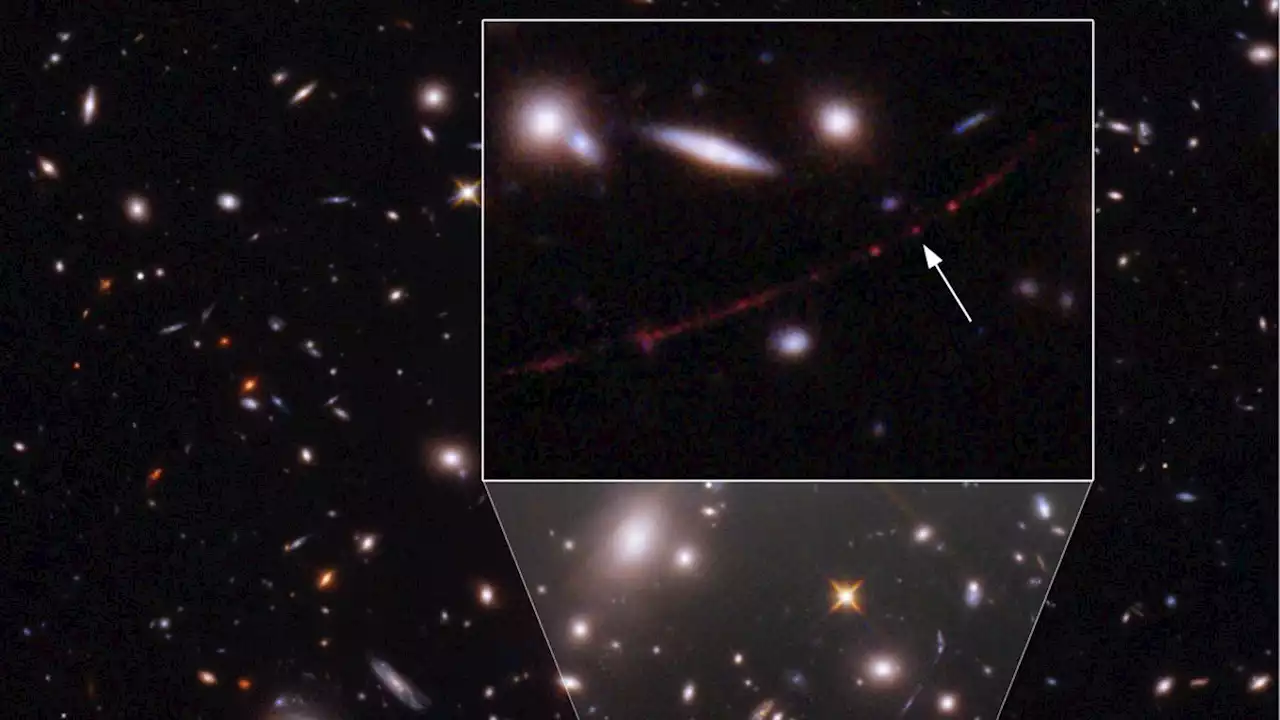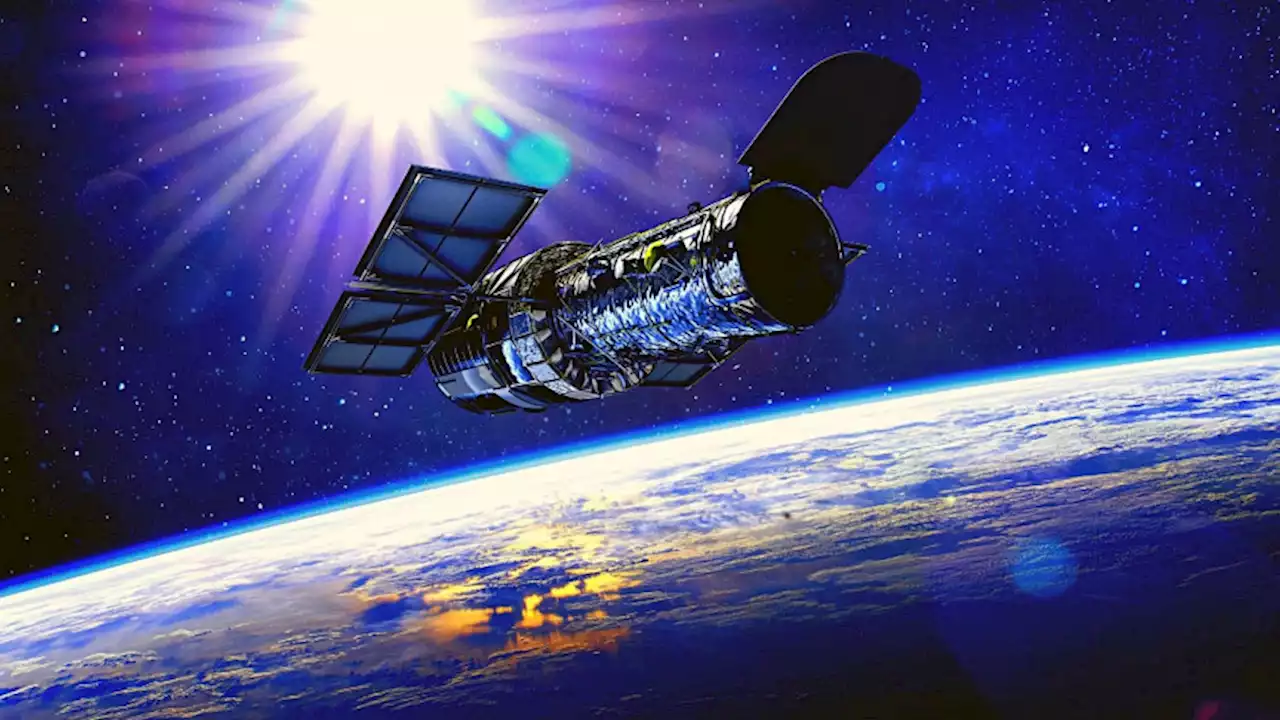Scientists have spotted the oldest and most distant single star ever recorded, thanks to the Hubble Space Telescope and a serendipitous alignment of several galaxies.
The star existed nearly a billion years after the Big Bang, according to the team of scientists, who published their findings in Under usual circumstances, our strongest telescopes can only spot individual stars in our closest galactic neighbors. But in a phenomenon called"gravitational lensing," a cluster of galaxies known as WHL0137-08 lined up in a way that created"a powerful natural magnifying glass," NASA NASA/ESA/Brian Welch /Dan Coe /Alyssa Pagan .
The scientists named the star Earendel, meaning"morning star" or"rising light" in Old English. The star may be up to 50 times the mass of our sun and millions of times as bright, and because of its distance from Earth, it took 12.9 billion years for its light to reach us, NASA said. Victoria Strait, postdoc at the Cosmic Dawn Center, Copenhagen, and a collaborator and co-author of the study, said that the old star offers scientists an opportunity to learn more about the past.
"As we peer into the cosmos, we also look back in time, so these extreme high-resolution observations allow us to understand the building blocks of some of the very first galaxies," sheThe previous oldest and most distant single star was observed by Hubble in 2018.
Ireland Latest News, Ireland Headlines
Similar News:You can also read news stories similar to this one that we have collected from other news sources.
 Hubble sees most distant star ever, 28 billion light-years awayThe Hubble Space Telescope has glimpsed the most distant single star it's ever observed, glimmering 28 billion light-years away. The star, nicknamed Eardenel, could be between 50 to 500 times more massive than our sun, and millions of times brighter.
Hubble sees most distant star ever, 28 billion light-years awayThe Hubble Space Telescope has glimpsed the most distant single star it's ever observed, glimmering 28 billion light-years away. The star, nicknamed Eardenel, could be between 50 to 500 times more massive than our sun, and millions of times brighter.
Read more »
 Hubble spots most distant star ever seen, 28 billion light-years awayMindy Weisberger is a Live Science senior writer covering a general beat that includes climate change, paleontology, weird animal behavior, and space. Mindy holds an M.F.A. in Film from Columbia University; prior to Live Science she produced, wrote and directed media for the American Museum of Natural History in New York City. Her videos about dinosaurs, astrophysics, biodiversity and evolution appear in museums and science centers worldwide, earning awards such as the CINE Golden Eagle and the Communicator Award of Excellence. Her writing has also appeared in Scientific American, The Washington Post and How It Works Magazine.
Hubble spots most distant star ever seen, 28 billion light-years awayMindy Weisberger is a Live Science senior writer covering a general beat that includes climate change, paleontology, weird animal behavior, and space. Mindy holds an M.F.A. in Film from Columbia University; prior to Live Science she produced, wrote and directed media for the American Museum of Natural History in New York City. Her videos about dinosaurs, astrophysics, biodiversity and evolution appear in museums and science centers worldwide, earning awards such as the CINE Golden Eagle and the Communicator Award of Excellence. Her writing has also appeared in Scientific American, The Washington Post and How It Works Magazine.
Read more »
 Hubble spies the most distant star ever foundHubble was in just the right place to glimpse the star's light, which was magnified by a gravitational lens.
Hubble spies the most distant star ever foundHubble was in just the right place to glimpse the star's light, which was magnified by a gravitational lens.
Read more »
 Hubble Space Telescope spots most distant single star ever seenMassive news! NASAHubble spots the most distant star yet seen, called Earendel 🌟
Hubble Space Telescope spots most distant single star ever seenMassive news! NASAHubble spots the most distant star yet seen, called Earendel 🌟
Read more »
 Hubble pushed to its horizon: a star 900 million years after the Big BangThe Hubble Space Telescope has spotted an ancient object from 000 million years after the Big Bang, stretching the limits of the legendary predecessor to Webb.
Hubble pushed to its horizon: a star 900 million years after the Big BangThe Hubble Space Telescope has spotted an ancient object from 000 million years after the Big Bang, stretching the limits of the legendary predecessor to Webb.
Read more »
